A mutual fund (PIF) is a portfolio of securities collected by a manager for people who want to invest. The point is that you do not need to collect a portfolio on your own, the mutual funds are professional market participants (
brokers , banking divisions, management companies) from several types of financial instruments and offer customers to buy a share of the mutual fund.
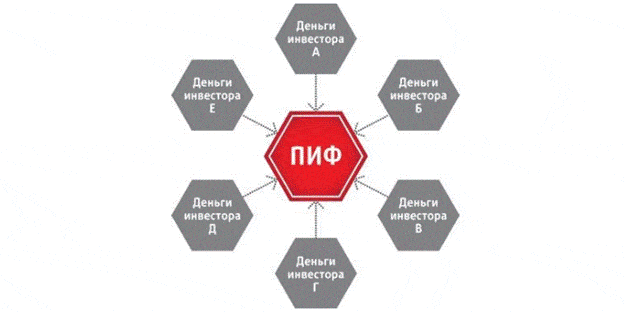
- Share of the mutual fund
- Mutual Fund Owners
- What mutual funds are there and which option may suit who
- How much is one share
- What is the difference between a mutual fund and an ETF?
- ETFs
- In what situation can mutual funds be of interest?
- How to invest in mutual funds?
- mutual fund yield rating
- Mutual funds of Sberbank – what is a share in Sberbank?
- Mutual Funds Tinkoff
- Mutual Funds Alfa Capital
- Investment term
- Risk
Share of the mutual fund
When a client enters his personal account to buy a mutual fund, he is offered a choice of portfolios consisting of bonds and stocks of various sectors: oil and gas, metalworking, raw materials, IT and others. The purchase price of a portfolio is a share of a mutual fund or share. It can be bought, sold, and even mortgaged accordingly. It is assumed that the price of a share will grow over time, if the strategy of this fund turned out to be competent, after some time the investor can sell his share for more than he bought it and make a profit, at least this is how it all looks in an ideal world.
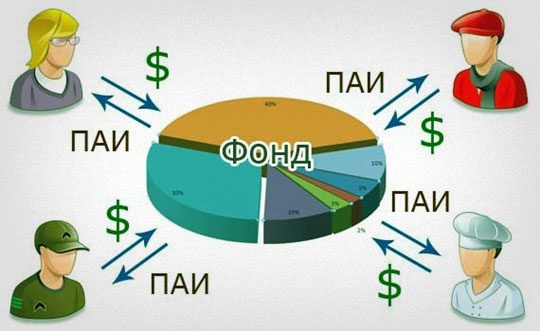
Mutual Fund Owners
The funds of the mutual fund are managed by the management company, it is the employees of the management company who decide which instruments to buy with the money of the shareholders in order to bring them financial benefits. The management company is a financial institution. There are about 50 large management companies in Russia, the best of which are part of a large financial group. For example, the financial group Sberbank, which includes a bank, a brokerage company and a management company – Sberbank Asset Management.

What mutual funds are there and which option may suit who
If an investor is thinking of investing in shares, there are several factors to consider:
- Mutual funds vary in the direction of investment , that is, there are mutual funds that invest in stocks, bonds, currencies, real estate, precious metals and art. But you need to understand that mutual funds of shares do not always send one hundred percent of all money into shares, as a rule, there are certain fixed restrictions, for example, if it is a mutual fund of shares, then 80% of the money should be invested in shares, 20% may fall on bonds.
- There are mixed mutual funds that invest 50% to 50%. Half is given to stocks, the rest to bonds. In Russia, they are divided into mutual funds for qualified investors who invest in any assets, even the most risky ones, as well as mutual funds available to a wide audience: unqualified investors, or retail investors. Their range of available assets is limited to the least risky financial instruments.
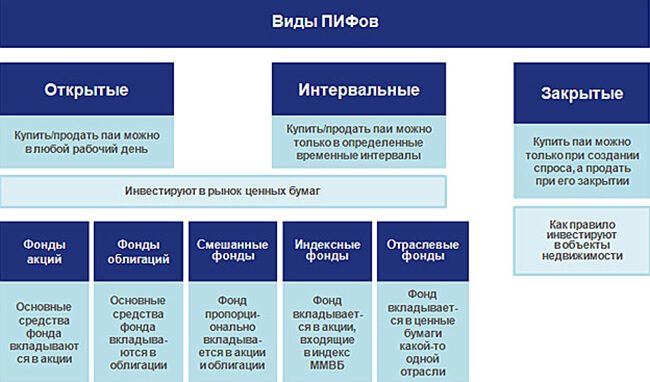
. Therefore, when an investor understands where the mutual fund will invest his money, it is worth getting acquainted with the investment declaration of each mutual fund, because it clearly states what share of the funds and what management companies have the right to invest in. In addition to the instruments where the depositors’ money goes, mutual funds differ in terms of buying and selling shares in terms of time. There are 3 main categories here:
- open mutual funds, the shares of which can be bought and redeemed literally every day. Such mutual funds, in view of the fact that money can be quickly taken from them, invests in liquid assets, for example, in shares of blue chips , for which there is always a demand;
- interval funds – units that can be bought or sold at specific intervals of time. As a rule, this can be done several times a year;
- The third category is closed -end funds, the shares of which can generally be bought only at the moment when the fund is being formed, and sold when the fund is closed.
The second and third varieties – interval and closed-end funds can afford to invest in less liquid instruments, because they predict when investors can withdraw money from them. On the one hand, less liquid instruments have more risks, but on the other hand, they have better profit potential. Therefore, it is better for conservatives to choose open mutual funds. If the investor is ready to take the risk, then interval or closed ones will do. 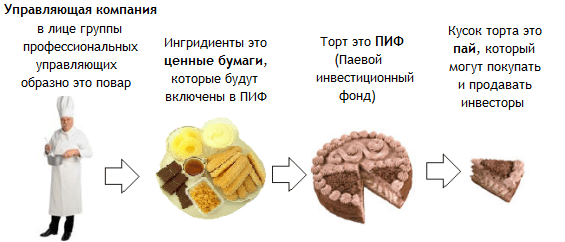
How much is one share
We remind you that the price of a share changes every day, and accordingly it depends directly on the value of the assets that the fund has acquired. Investors’ income will be determined by how much the share price has increased. You can track the dynamics of the price of a share on the website of management companies and in other open sources. These funds publish the share price every day at the end of the day, and interval and closed ones at least once a month. When buying a share, the investor pays a premium. It, depending on the amount of invested funds, and the agent through which the purchase of mutual funds is made, can reach 5 percent of the amount of investments. When selling a share, you do so with a so-called discount. It depends on how long the investor has owned the share, on the specific conditions of the agent. As a rule, the discount does not exceed three percent of its value.
- Availability . Investments in mutual funds have a low entry threshold. You can start from 1000 rubles
- Professionalism in management . Experts manage investors’ money. In fact, this argument is moot, because experts technically know how to invest: open an account, buy financial instruments, set a condition for opening a trade. But experts don’t know what to buy to become a millionaire tomorrow because, unfortunately, financial markets are inherently unpredictable. Therefore, sometimes, Paul the octopus can give more accurate stock forecasts than an expert with many years of experience.
- High yield . When mutual funds are sold, the buyer is told about the potential high income, which will be higher than the income on deposits. First, the income from a mutual fund is not guaranteed in any way and the mutual fund invests in some type of asset. If the market does not grow during that period of time while the investor owns the mutual fund, then the mutual fund will not show any profitability, while the profitability of the deposit is still fixed. In general, it is fair to compare the yield of mutual funds not with a deposit, but with an index. Then you can understand how active management is more profitable – just investing in the index.
- They talk about low commissions , but the information is not always true. Mutual funds are quite an expensive story for the person who buys them, and, of course, it is much more expensive than investing on your own.
- Liquidity . Shares of open funds can be sold at any time without additional losses, this is true, but if we talk about shares in liquid instruments, then this can be done at any time without additional losses.
- Preferential taxation . Some financial companies say that with the growth of mutual fund assets, investors can be exempt from income tax if they earn less than three million rubles a year on shares, if they hold shares for more than three years. This is the same as with the regular and stock markets. Accordingly, income tax on the growth of the value of assets is not paid.
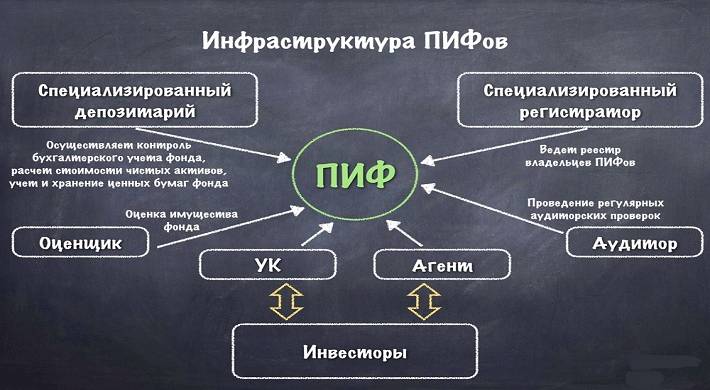
What is the difference between a mutual fund and an ETF?
Today, the ETF instrument is gaining popularity
, that is, funds traded on the exchange, they are more popular than the good old retro-grad mutual funds. If we compare mutual funds and ETFs, then the advantages of the second lie on the surface.
- Firstly, they are more liquid, easier to buy, they are purchased through a brokerage account or we can also buy it on other platforms, there is also a tax benefit.
- Mutual funds are purchased at the office of the management company, on their website. It is impossible to buy a mutual fund through a brokerage account and other platforms. This is a negative point.
- Mutual funds are actively managed. Managers are always trying to outperform the index, while ETFs almost always follow the stock index.
- For a mutual fund, if the commission is in the range of 3.5 percent, not counting markups and discounts, then for ETFs, the commissions are lower. In Russia, this is less than one percent, and no additional surprises should be expected here.
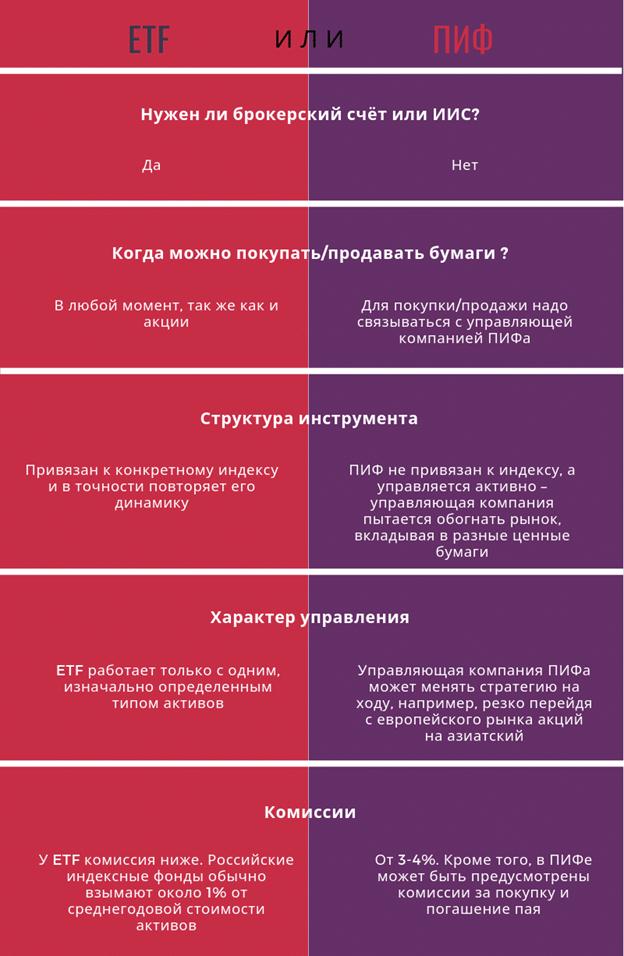
ETFs
Investment funds are gradually becoming obsolete when it comes to mutual funds that offer to invest in exchange-traded instruments. There are two alternatives here:
- Investing in an ETF is usually a more profitable alternative for an investor than a mutual fund.
- The second alternative is an independent purchase of shares, bonds, other financial instruments : to an individual investment account for a long-term investment, and then the subsequent receipt of a tax deduction.

portfolio for himself no worse than professional managers do it for him. Another thing is that for this you need to have certain skills, if an investor does not have such skills, then it is better to buy ETF funds.
In what situation can mutual funds be of interest?
For example, if a person is looking at real estate, then real estate mutual funds can become a unique tool for him. This is actually the Russian analogue of American rates. Or mutual funds that invest in art objects, because it is quite difficult for an investor without specific skills to invest in the IT industry, then mutual funds here help everyone who wants to try in this area to do this.
How to invest in mutual funds?
In order to invest in a mutual fund, you will need to open an account with a broker, if the account is open, then it remains to find the tab with the list of mutual funds and select the appropriate one. The opinion of professionals is good, but it is desirable for an investor to understand the basics of economics and have an idea about the stock market, if possible, then consult with a broker. This makes it easier to choose the right PIF.
Important: check the availability of a license on the site: https://www.cbr.ru/registries/RSCI/activity_uk_if/
mutual fund yield rating
| mutual fund | Yield | Website |
| System Capital – Mobile | 14.88% | https://sistema-capital.com/catalog/ |
| URALSIB Gold | 3.66% | https://www.uralsib.ru/investments-and-insurance/ivestitsii/paevye-investitsionnye-fondy-pif-/ |
| Sberbank – Global debt market | 2.58% | https://www.sber-am.ru/individuals/funds/ |
| RGS-Zoloto | 2.09% | https://www.rgsbank.ru/personal/investment/pif/open/ |
| Raiffeisen – Gold | 2.02% | https://www.raiffeisen.ru/retail/deposit_investing/funds/ |
| Gazprombank – Gold | 1.75% | https://www.gpb-am.ru/individual/pif |
| New construction | 1.72% | http://pif.naufor.ru/pif.asp?act=view&id=3164 |
| Kapital-gold | 1.69% | http://www.kapital-pif.ru/ru/about/ |
Mutual funds (mutual funds): what is it and how does a mutual fund work, rating of the best mutual funds by profitability: https://youtu.be/GB_UJvUDy_s
Mutual funds of Sberbank – what is a share in Sberbank?
Sberbank is a recognizable and reliable bank that has existed for over 100 years. It is reasonable to invest in such a bank, and for this there are many varieties of mutual funds, we will highlight the main ones:
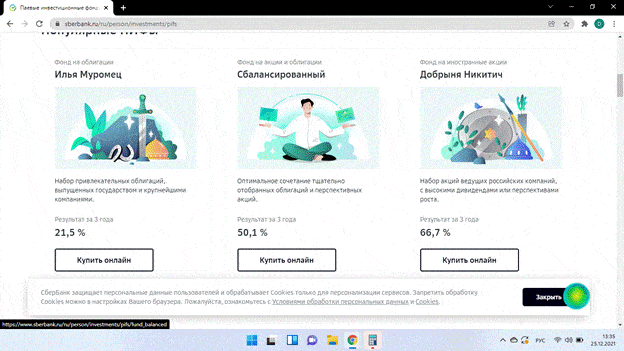
- Bond fund – Ilya Muromets ( https://www.sberbank.ru/ru/person/investments/pifs/fund_bond_im ). Consists of state, municipal, corporate bonds of reliable Russian issuers. It receives income from coupon payments and growth in the value of the asset. Mutual investment fund with a low risk percentage of 0-5%, an income above inflation of 8-10% and moderate liquidity.
- Fund for shares and bonds – Balanced ( https://www.sberbank.ru/ru/person/investments/pifs/fund_balanced ). A mixed mutual fund combines two types of securities. Profits from capital gains, income from bonds. Invests mainly in Russian financial instruments, 10-20% yield, high risk and moderate liquidity.
- The Dobrynya Nikitich Fund ( https://www.sberbank.ru/ru/person/investments/pifs/fund_equity_dn- ) consists of shares of Russian companies. What makes the fund highly risky, profitable 15-20% and maintains moderate liquidity.
Exchange-traded mutual funds of Sberbank: is it worth investing – SBMX, SBSP, SBRB, SBCB and SBGB mutual funds: https://youtu.be/DBRrF-z-1do
Mutual Funds Tinkoff
It occupies a leading position among popular brokers, ranks first in terms of the number of active clients and investments in mutual funds of the bank, is considered a reliable and profitable business.
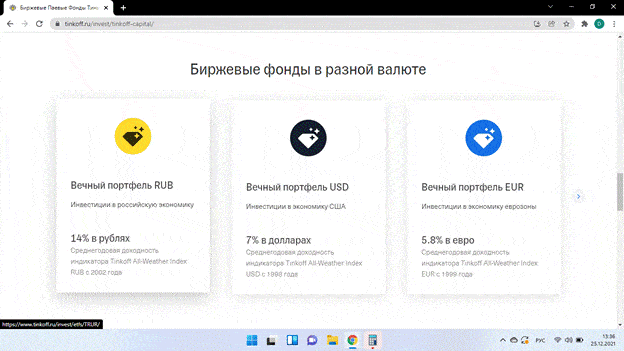
- Eternal RUB portfolio ( https://www.tinkoff.ru/invest/etfs/TRUR/ ) – The fund invests in three instruments, Russian stocks and bonds, gold. Investing in various financial instruments allows you to assume minimal risk when investing, but at the same time makes it low-yielding 5-10%. Entry price 6.04 rubles.
- Perpetual income USD ( https://www.tinkoff.ru/invest/etfs/TUSD/ ) – provides for investments in American stocks, bonds and gold in three equal shares. Yield in dollars 5-10%, with a low level of risk. The cost of a share is 0.2 dollars.
- Perpetual income EU R ( https://www.tinkoff.ru/invest/etfs/TEUR/ ) – provides for investments in European stocks, bonds and gold in three equal shares. Yield in euro 3-5%, low risk. The cost of investments is 0.10 euros.
Mutual Funds Alfa Capital
The management company offers an interesting type of investment in various global and Russian companies. Professionals analyze each company and then invest.
- Resource ( https://www.alfacapital.ru/individual/pifs/opifa_akn/ ) – the manager is looking for, analyzes promising stocks in the oil and gas and petrochemical, mining sectors. The yield is 15-30%.
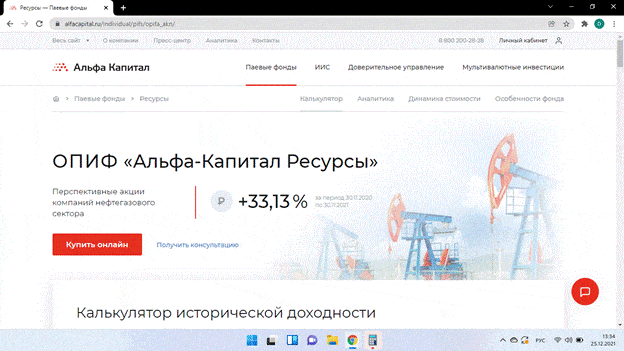
- Liquid shares ( https://www.alfacapital.ru/individual/pifs/opifa_akliq/ ) – the largest Russian and foreign issuers are selected, with the best financial performance and growth prospects. Yield 15-25%.
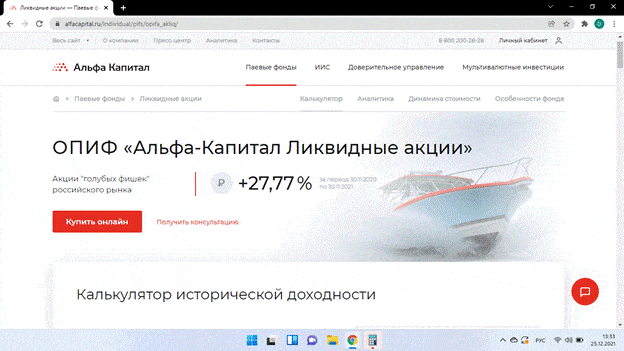
- Balance ( https://www.alfacapital.ru/individual/pifs/opif_aks/ ) – investments in the best Russian stocks and bonds. Moderate risk and return of 15-20%.


Investment term
An investor can buy and sell a share on the same day, but you need to understand that then funds are lost on commissions. The longer you hold a share, the more profitable the investment, luring with beautiful numbers with high returns, they mean a period of 3 or 5 years, for a month investments may not add to the value of the share.
Risk
There are different shares with a low level of risk, but then the yield will be lower. The higher the return, the higher the risk. Since financial instruments are not immune from market fluctuations and when the market falls, the value of the fund may fall.




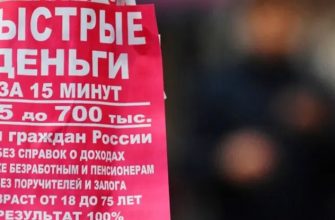
i would like to invested.